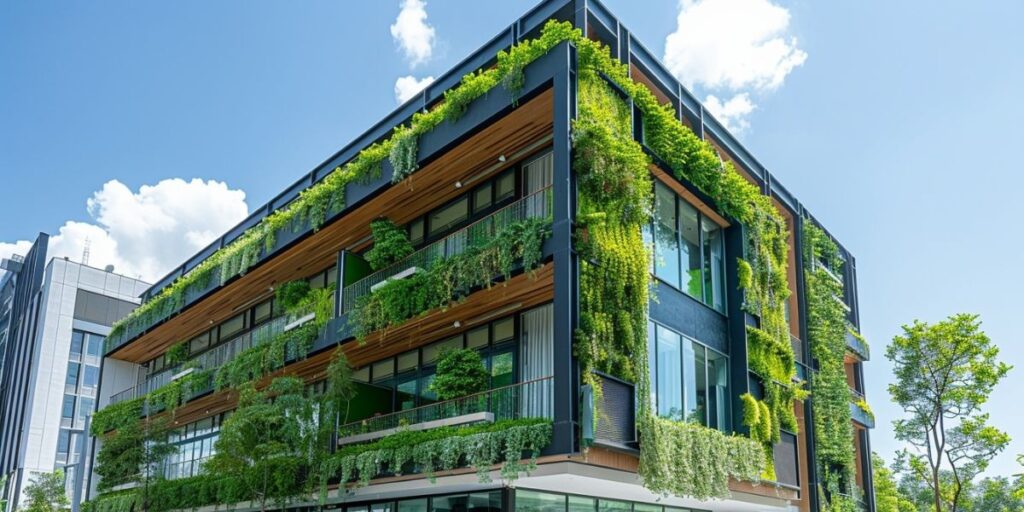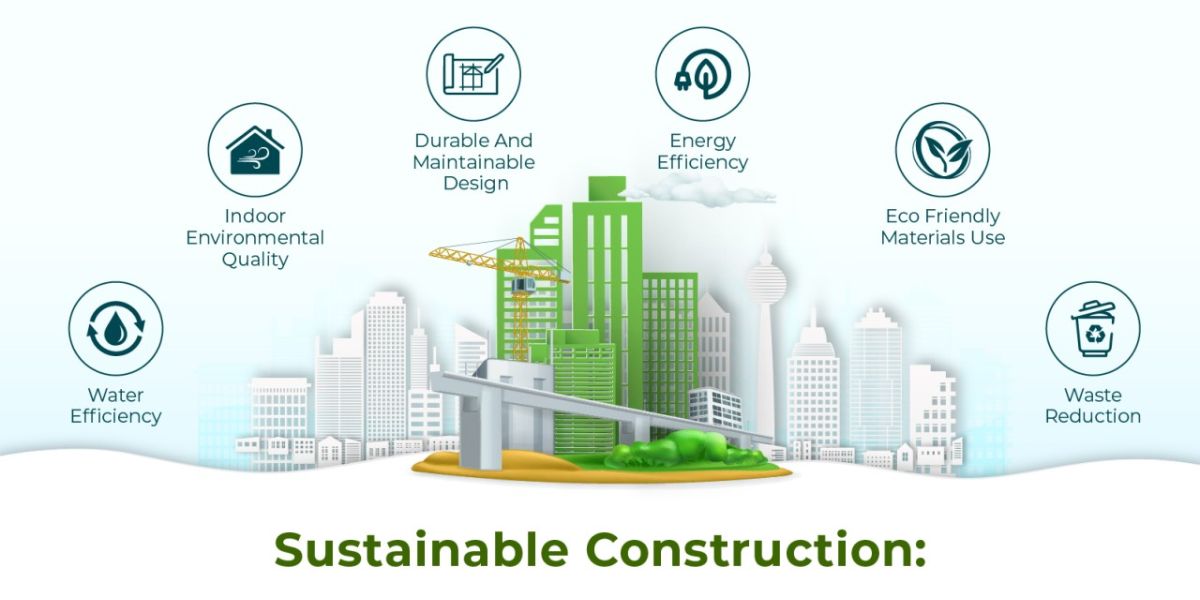In a world where the built environment accounts for a huge share of global emissions and resource use, the question of whether to retrofit existing buildings or erect new ones has become increasingly important. Right now, as a decision-maker, you’re faced with choices that affect not just your budget and timeline, but also your legacy. In this blog, we explore the trade-offs, the details, and how to choose for sustainability. Let’s get into it!
Setting the Scene: Why This Matters?
Modern building decisions play a defining role in sustainable building practices worldwide. Choosing the right path, retrofitting an existing asset or pursuing a new build, has implications for the asset’s lifecycle carbon footprint, its operational cost, and its long-term value.
The term “retrofitting vs new construction sustainability” sums up the dilemma: do we preserve what we already have, or start fresh with something new? Each approach has merits and risks. To dig deeper, we’ll explore the benefits, the challenges, and the contexts in which each wins out.
What Does Retrofitting Involve?
Retrofitting means upgrading a building that is already standing, enhancing its energy efficiency, improving systems, sealing the envelope, updating HVAC, lighting, and controls. A deep retrofit is an even more thorough upgrade, targeting large reductions in both operational energy and embodied emissions.
When done well, retrofits can deliver significant performance improvements, often at lower cost and with fewer materials than starting from scratch. They call into play the idea of energy efficiency retrofitting. For instance, studies have found that retrofitting existing buildings can lead to 50 to 75% less carbon emissions than constructing a comparable new building.
The Sustainability Case
- Retaining a building means preserving the embodied carbon already invested in its structure and materials. The structure is already in place, so fewer new materials, less demolition waste, and less new‐construction impact.
- Retrofitting enables improved operational performance: better insulation, smarter controls, and less energy use.
- It often supports heritage and community continuity, and avoids the brownfield-to-landfill cycle of demolition.
Challenges to Watch
- Existing building constraints: Structural limitations, layout inefficiencies, site access, and legacy systems.
- Upfront cost and disruption: Retrofits may require phased work, careful scheduling, and interface with ongoing operations.
- Diminishing returns: At some point, the cost of achieving further performance gains may approach the cost of new construction.
- Complexity: The decision criteria are nuanced. Each building is unique, so the scale and context may vary.
What Does a New Build Offer?
Building new allows you to design for optimal performance from day one: site orientation, structural systems, high-efficiency envelope, renewable energy integration, and modern controls. In concept, the new build can be tuned to current best practices and a low overall carbon profile.
However, new builds bring significant embodied carbon: material extraction, transportation, manufacturing, construction, and land disturbance. One summary states that the embodied carbon for a new building is often twice that of a deep retrofit. The choice to build new must factor in this heavier upfront impact and the full lifecycle of the asset.
When New May Be the Right Path
- If the existing building is structurally inadequate or cannot be adapted to performance targets, the new path may be necessary.
- If the site constraints or business model demand a completely different program, layout, or scale, starting fresh can be more efficient.
- If the long-term horizon supports amortizing a new asset over many decades, and lifecycle cost modeling supports it.
Key Metrics and Considerations for Decision-Making

Carbon Footprint of New Builds Vs Retrofits
When looking at sustainability, two carbon types matter: embodied carbon and operational carbon. A retrofit can dramatically reduce both when compared to demolition and new construction. The metric cost benefits of retrofitting often hinge on achieving substantial operations savings plus preserved embodied carbon.
Energy Efficiency Retrofitting
Retrofitting efforts focused on envelope improvements, system upgrades, and control optimization yield strong returns. For older buildings, especially, the gap between current performance and best practice is large, so the “low-hanging fruit” may be easier to capture. In this sense, energy efficiency retrofitting becomes both cost-effective and sustainability-driven.
Sustainable Building Practices and Business
When you bring in sustainable building practices, you’re also aligning with market demands: tenant preferences, regulatory pressure, and ESG expectations. While the term ESG consulting services appears once in our context, the broader lens is about embedding performance, transparency, and lifecycle thinking into asset stewardship. The question “How do I protect value and manage risk while being sustainable?” is central.
Financial Aspects
The financial modeling needs to reflect not only capital cost, but O&M savings, lease effects, asset value, risk of obsolescence, regulatory uplift, and market perceptions. Retrofitting often offers strong business case returns because savings can accrue early and risk is mitigated by leveraging existing infrastructure.
Decision Matrix: Retrofit Vs New Build
Here are some practical decision factors:
| Factor | Favor Retrofitting | Favor New Build |
| Structural envelope sound? | ✔ | ✖ |
| Historic or heritage value? | ✔ | ✖ |
| Can operational performance be improved significantly? | ✔ | ⚠ |
| Layout/usage change needed? | ⚠ | ✔ |
| Long amortization horizon and design flexibility? | ⚠ | ✔ |
| Low-carbon materials and design ready? | ✔ | ✔ |
Real-World Insights and Industry Trends
What The Research Says
According to the World Green Building Council, “the greenest building is the one that is already built.” Retrofitting key parts of the existing stock becomes essential when many buildings today will still be standing in 2050. The logic is clear: ignore existing buildings and you ignore a major segment of emissions.
Another study noted that retrofit projects can reduce operational energy by 30 to 50% in existing buildings, and when you factor in embodied emissions, the savings can be substantial.
Industry Practice
Both the real estate and construction sectors are increasingly embracing retrofitting. For example, an article by the Urban Land Institute observed that large portfolios now build retrofit strategies into asset management plans rather than defaulting to demolition and rebuild.
Market and Regulatory Pressures
Tenants, investors, and regulators are demanding higher-performance assets. Buildings with poor energy ratings or high carbon footprints face growing risks of depreciation. This means that choosing retrofitting as part of sustainable building practices can protect value and align with market trends.
Practical Steps for Owners and Developers
Audit and Assess the Asset
Start by evaluating the existing building’s structural condition, envelope, systems, and potential for improvement. Look at performance gaps: energy use, maintenance cost, tenant satisfaction, compliance risk. That gives you a baseline.
Define Sustainability Goals
What are your targets for carbon reduction, operational savings, occupant experience, and lifecycle cost? Are you aiming for net-zero ready, or major efficiency gains? These goals will guide retrofit depth or new design.
Compare Lifecycle Costs
Model retrofit vs new build: capital spend, energy and maintenance cost savings, asset value uplift, risk of obsolescence, and carbon emissions over, say, 30 to 50 years. Use scenario modeling.
Factor Embodied Carbon and Material Use
If starting new, be very attentive to embodied carbon in materials. If retrofitting, focus on high-impact upgrades (envelope, systems, controls) to maximize improvement while leveraging existing structure.
Engage Stakeholders Early
Collaborate with engineers, sustainability consultants, asset managers, tenants, and financiers. The retrofit pathway often needs careful phasing and buy-in.
Monitor, Verify, and Iterate
Once work is done, track performance: energy metrics, occupant comfort, maintenance savings. Adjust as needed. The ongoing monitoring ensures you capture the value of retrofitting or new build.
Final Takeaways
There’s no blanket answer to which is more sustainable. But the evidence strongly supports prioritizing retrofit when feasible. Retrofitting often delivers lower embodied carbon, improved operational efficiency, and market alignment; all key to sustainable building practices.
However, new construction has its place when the existing asset cannot be adapted or the program demands a fresh start. As you proceed, keep the whole-life view front and center: carbon, cost, risk, value, occupant experience. At Spectreco, we believe in helping you navigate the hard choices with a data-driven approach and ready business advisory services. In an era where the built environment is under the spotlight for its climate impact, leaning into retrofit as the default mindset makes sense. Keep in mind that the right decision not only serves your asset and organization; it serves the planet.


